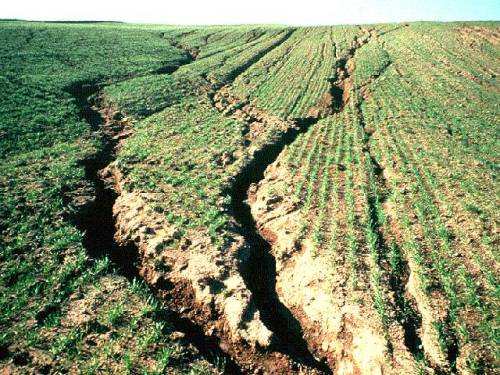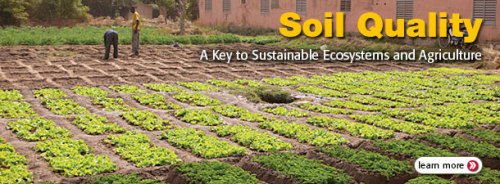Urgent Need to Calculate Costs of Soil Erosion
Over the years, farmers are losing their reverence for the soil. The soil on the snow in a roadside ditch this winter is a stark reminder of the losing proposition confronting U.S. agriculture. Water quality and nutrient management grab headlines. However, the crucial role of soil conservation in protecting our water is overlooked.

“There’s a high correlation between water quality and soil erosion, especially phosphorus,” says Rick Cruse, Iowa State University agronomy professor and director of the Iowa Water Center and the Iowa Daily Erosion Project.
Cruse says sediment is Iowa’s number one water-quality problem. “Ephemeral [tillable] gullies are the greatest conductor of sediment from fields,” he says. “As much as 57% of phosphorus in rivers is from ephemeral gullies.”
USDA estimates for 17 states indicate that ephemeral gully erosion accounts for 18% to 73% of the total erosion. What is the true cost of erosion and its impact on yields?
USDA pegs average soil erosion (soil movement on slopes) at 5.4 tons per year.
In 2011, the Environmental Working Group conducted a study using Daily Erosion Project data that revealed some Iowa farms were losing topsoil up to 12 times faster than government estimates. “An average is a good barometer, but it isn’t a very precise indicator,” Cruse says.
Tom Buman, a former NRCS conservationist who launched Agren, Inc., in 1996 to help farmers with conservation, agrees. “Until we start using economic drivers instead of environmental drivers to sell conservation, we’ll make very little progress,” he says. He envisions a day when farmers can calculate the actual return on investment for each conservation practice.
The complexity of the challenge is enormous. Cruse’s team is using a new satellite system to track, by farm, the type of soil, a field’s slope, crop rotation, type of tillage, and conservation efforts. This will be merged with a Nexrad radar system that includes precipitation data.
Finally, soil depth measurements, as well as multiple years of crop yield data at about a dozen farms, will be added.
Aggressive tillage breaks up soil structure, promoting erosion and preventing water infiltration. Manure application also disturbs soil (knife injection reduces the risks). For more, see “Ways to Boost Soil Health.“
Weather extremes increase the urgency of stemming soil losses. “High-intensity, high-volume rainstorms have been smacking us,” Cruse says.

Landowners also need to take the long view. I’m looking forward to the day when tenants can aggressively compete to market their conservation practices.
“If you own land for decades and plan to pass it on, you can realize the long-term profit of maintaining topsoil,” Cruse says.
Yet, it’s not hard to see the waste of filling ephemeral gullies with topsoil each year, only to watch Mother Nature auger it, along with the lime, herbicides, and fertilizer, out of fields and into the water.
I grew up in Iowa’s Loess hills. Loess soil is very vulnerable to erosion. The panoramic landscape once featured acres of steep pasture hillsides. Today, row crops are plastered across many hilltops. The area has one of the highest erosion rates in the U.S. (about 40 tons per acre per year).
Other marginal land has been pulled out of conservation programs in response to record prices.
However, federal funding cuts in EQIP and Conservation Stewardship, and state cuts in cover crop funds are detrimental. Landowners and farmers have signed up for soil conservation programs, only to be turned away due to a lack of funding.
No one argues that the status quo hasn’t improved since the 1975 Super Bowl Blizzard (also known as The Black Blizzard) in North Dakota.
Yet Cruse and his team’s new soil-erosion model could be what it takes to reverse shrinking conservation resources, or to apply a laser focus to damaged areas. The average rate of erosion regarded tolerable by conservation agencies is 20 times the rate at which topsoil regenerates.
Tolerable for how long? Depleted topsoil cripples income potential, requires more fertilizer, and worsens water quality. Unlike reality TV, when it’s about soil, the biggest loser won’t come out on top.
